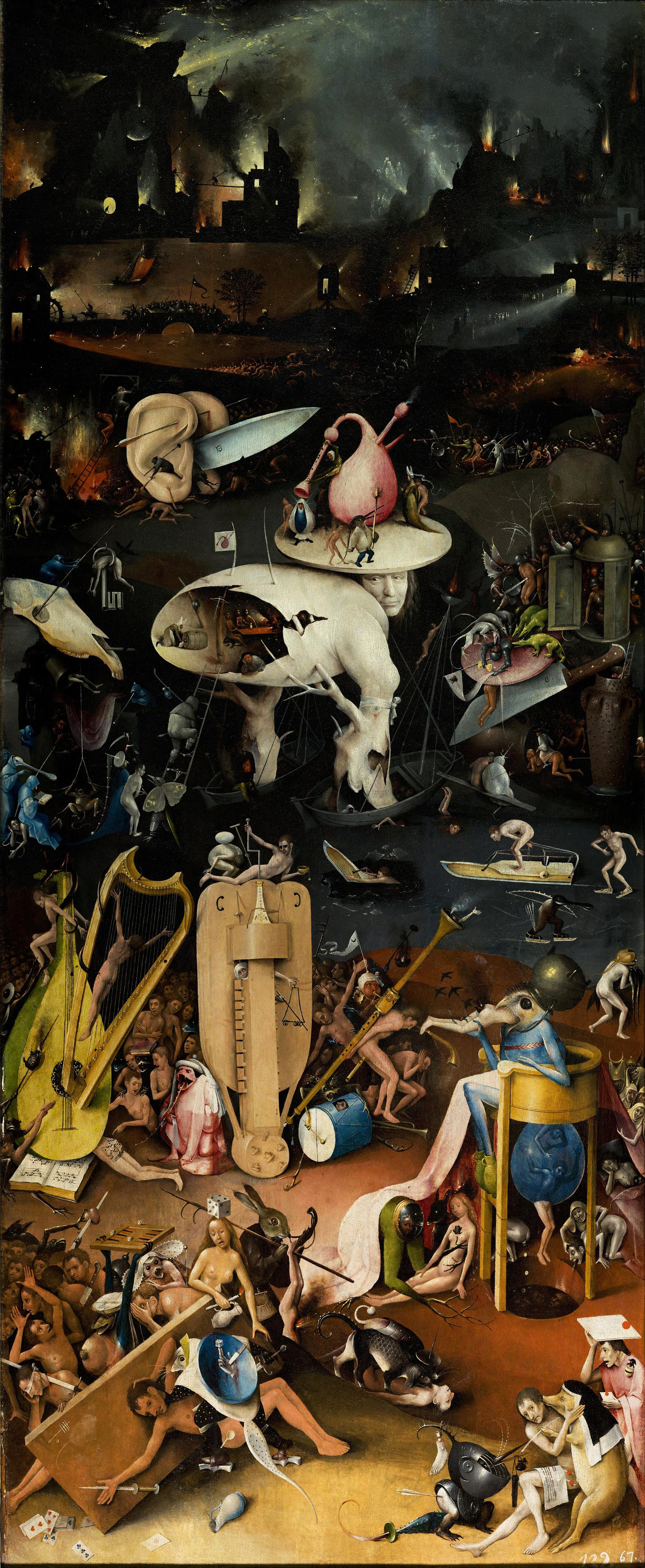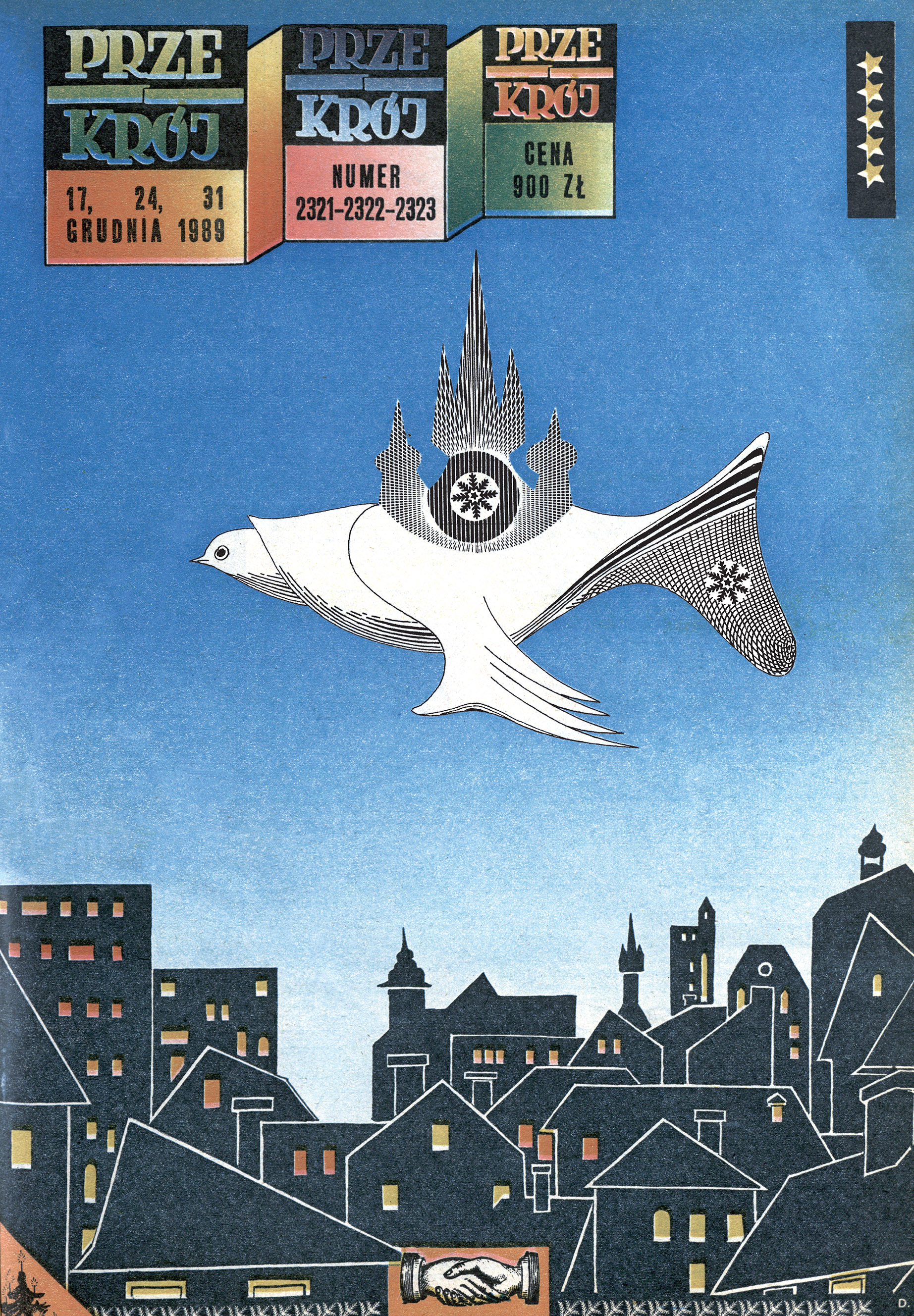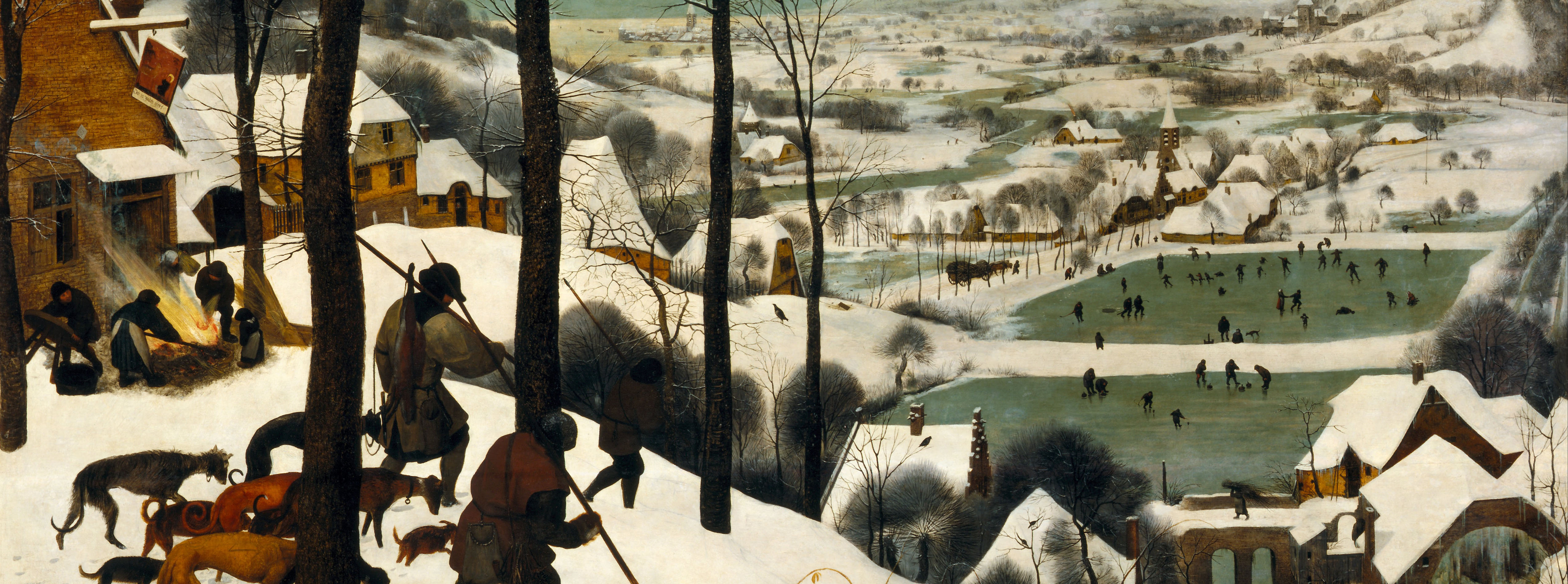
Many myths and contrived overinterpretations have sprung up around Hieronymus Bosch’s triptych “The Garden of Earthly Delights.” However, the latest research—conducted after hours by the editors of Przekrój—suggests that one shouldn’t seek sophisticated esoteric teachings in the Dutch master’s painting. Earthly delights mean just that, and more specifically, a rather successful New Year’s Eve party. With the help of simple symbols, Bosch conveys the basic principles of ensuring a carefree, happy transition into the next twelve-month cycle.
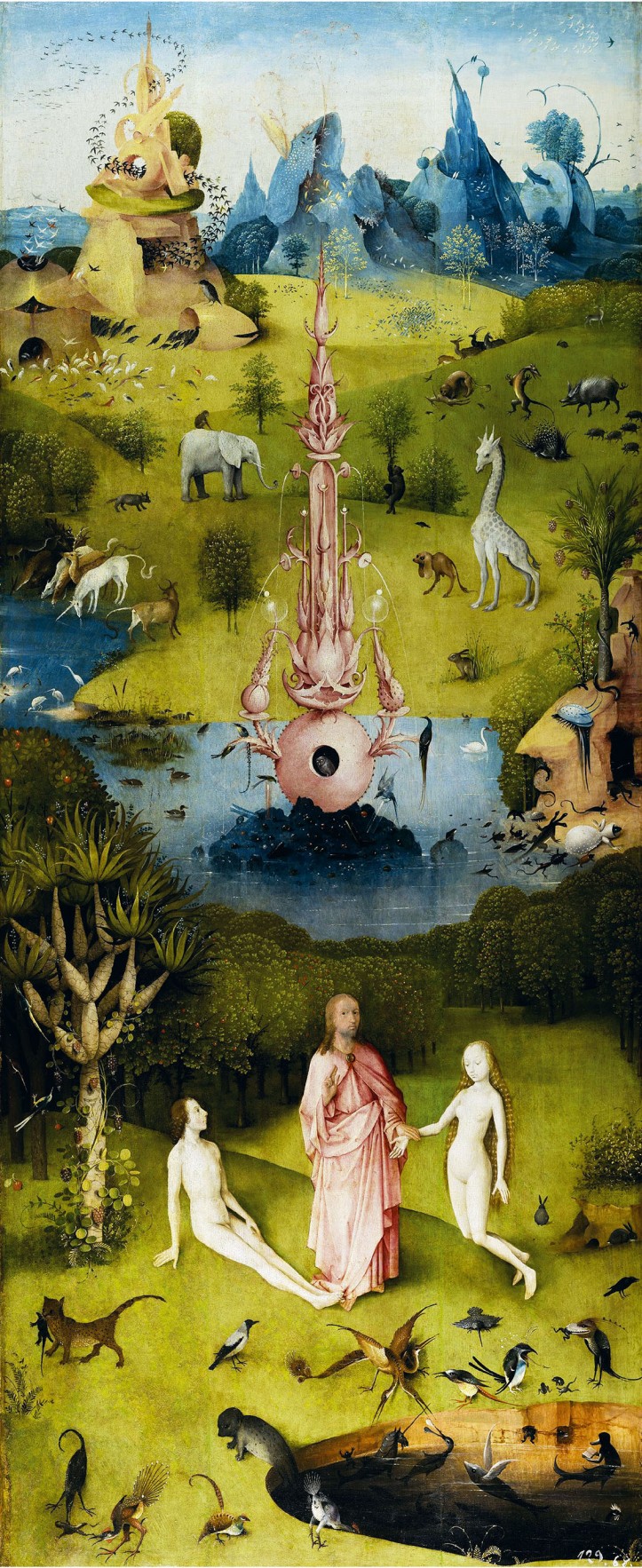
The left panel of the triptych depicts getting ready to go out and have fun.
***
Adam’s sedentary position indicates his aversion to the very idea of partying on Saint Sylvester’s Day. He thinks it’s an evening just like any other, best spent without leaving the house at all. Eve, on the other hand, thinks it’s practically a sin not to celebrate.
***
Their dispute is settled by Jesus, siding with Eve.
***
Raising the three fingers of his right hand, Jesus proves his great wisdom. He predicts that Adam and Eve’s positions will be reversed at 3 a.m. She’ll want to go home, and he’ll be of the opinion that one should stay out. After all, it’s New Year’s Eve, the only such night in the calendar.
***
Adam and Eve are naked. In this subtle way, Bosch reminds us that one should get dressed before leaving the house.
***
The creatures at the watering holes serve to prompt owners to take care of their pets’ needs before leaving. An elephant is most likely to enjoy spending the festivities in the company of a monkey, a three-headed salamander with its tail submerged in a pond, and so on.
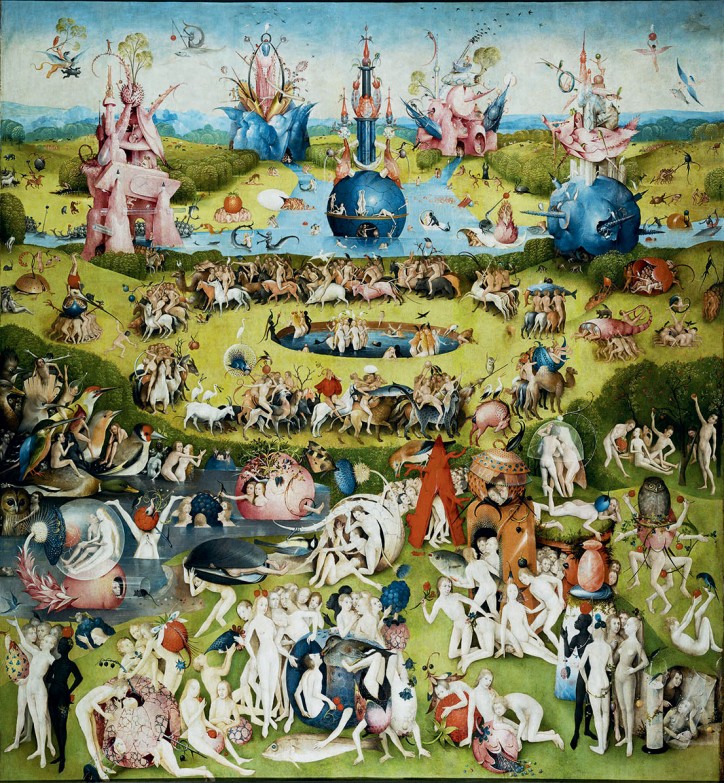
The middle panel of “The Garden of Earthly Delights” depicts a New Year’s Eve party in progress.
***
A number of gigantic wild strawberries, blueberries, and blackberries signal that an abundance of food, and not just drinks, is the key to a successful event.
***
The procession around the pool represents dancing revelers. People are mounting various animals—informing us of the many possible moves to be made when waltzing, and the fact one can truly express themselves with a good boogie.
***
A few owls signify meaningful, intelligent conversation. The remaining, multitudinous fowls denote jokes, anecdotes, and minor pleasantries. In this way, Bosch suggests the appropriate balance between sincerity and jest at a party, with a definitive lean to the latter.
***
On the bottom right of the triptych’s central scene, next to the large owl, we see a reclining woman talking to an equally recumbent man whose head is replaced by a fruit. Of course, a New Year’s Eve party is a great place to meet someone interesting—if with muscle and bone for face, not a berry.
***
Next, take a look at the red tree trunk shaped like an A. There are five legs sticking out underneath—the elevator’s full, so it’s better to go up the stairs.
***
In the distance, there’s a group of people entering the shell of a great, big egg. It’s unclear what they’re looking for, but best not to ask, and each to their own when cavorting.
***
Slightly to the right of the huge egg is a floating blue sphere with a tower, and gold ring where a couple of people are doing a handstand while facing each other. In this way, Bosch asserts that when in conversation with someone, it’s worth trying for a moment to see their point of view, even if it seems a little strange.
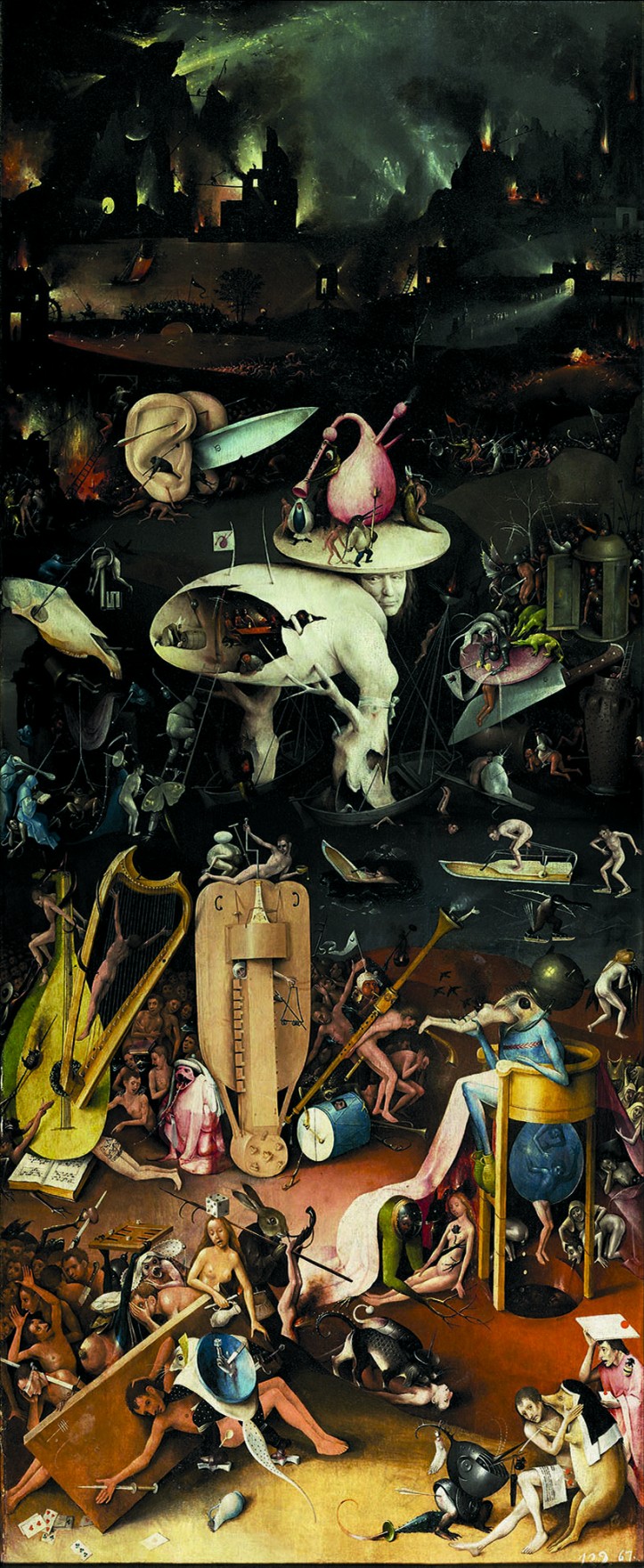
The right panel, depicting Hell, demonstrates what can go wrong before countdown.
***
The glow and flashes set in the background represent flares and fireworks. Bosch’s opinion is to unequivocally forego the explosives. Animals get scared, people get injured. Let’s listen to the master Hieronymus.
***
Presented on the right and in the middle of the final scene of “The Garden of Earthly Delights,” is the eternal damnation of knights. They’re helmeted hammerheads, delinquents eager to get into fights, often driven by an overstated sense of honor. Guests like that most certainly spell trouble.
***
Next, the last judgment of religious ascetics (or rather, beer-brewing, monastic drunkards). Thus Bosch encourages consuming alcohol in moderation.
***
Moving the gaze lower, there’s the scene known as the hell of musicians. This is a symbolic representation of an argument over access to the soundsystem. The score written on someone’s butt clearly shows what said socializer thinks about another’s choice of tunes. People here are suffering. They’re being tortured using musical instruments, which were never meant for inflicting pain. As if that weren’t enough, further up there’s a giant knife protruding through an even bigger pair of ears. This serves as a reminder that not all music that pleases us will appeal to others.
Finally, in the lower-right corner, we can see a pig in a nun’s veil. It’s easy to guess what this crude symbol means: never pretend to be someone you’re not, especially at a party, because it may turn out that it wasn’t you who had fun, but the person you pretended to be. Or, at least, that’s what Hieronymus Bosch seems to be saying.
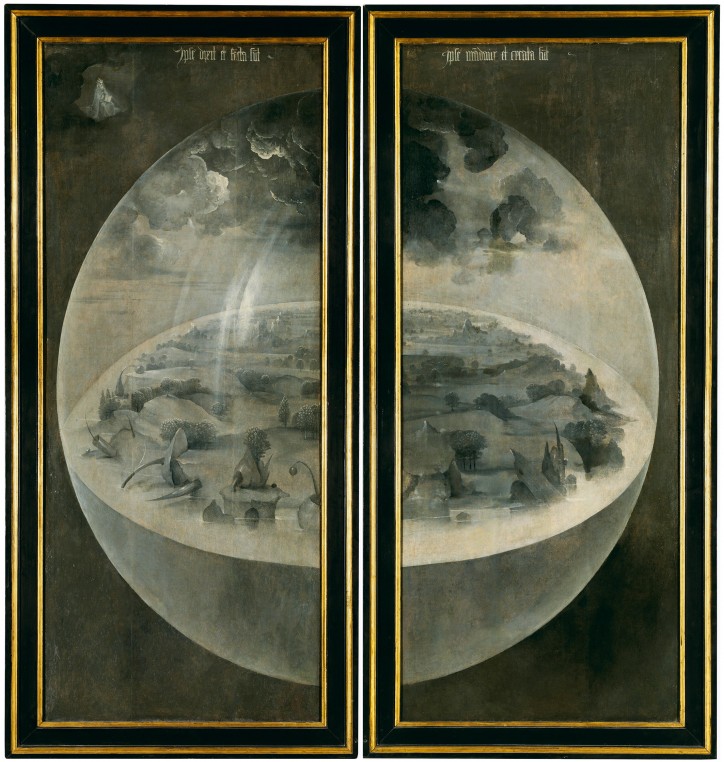
On closing the doors of the triptych, the eyes would be met with a view of the flat earth during the act of creation, painted in all shades of gray. This is, of course, the world we see after the party is over. It may seem lifeless and two-dimensional right now, but the color and form will return.


